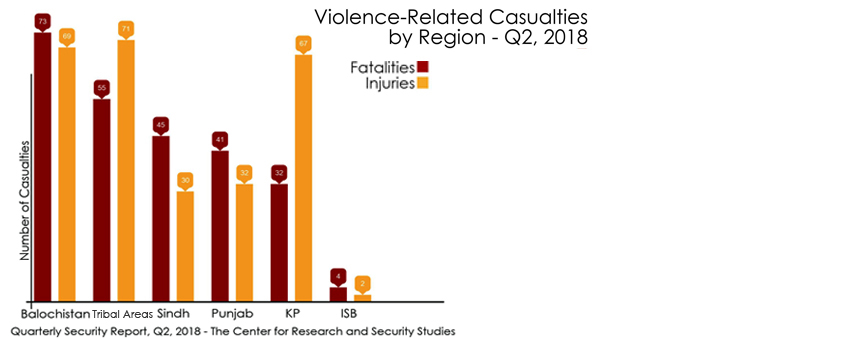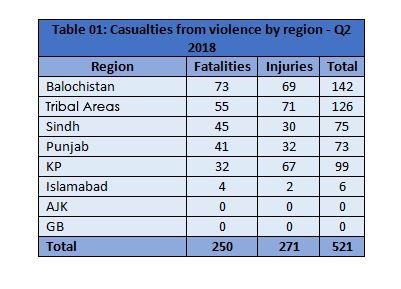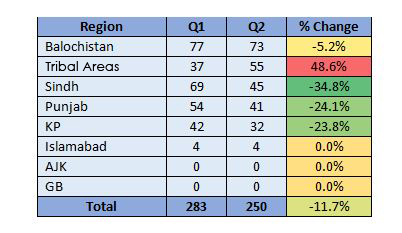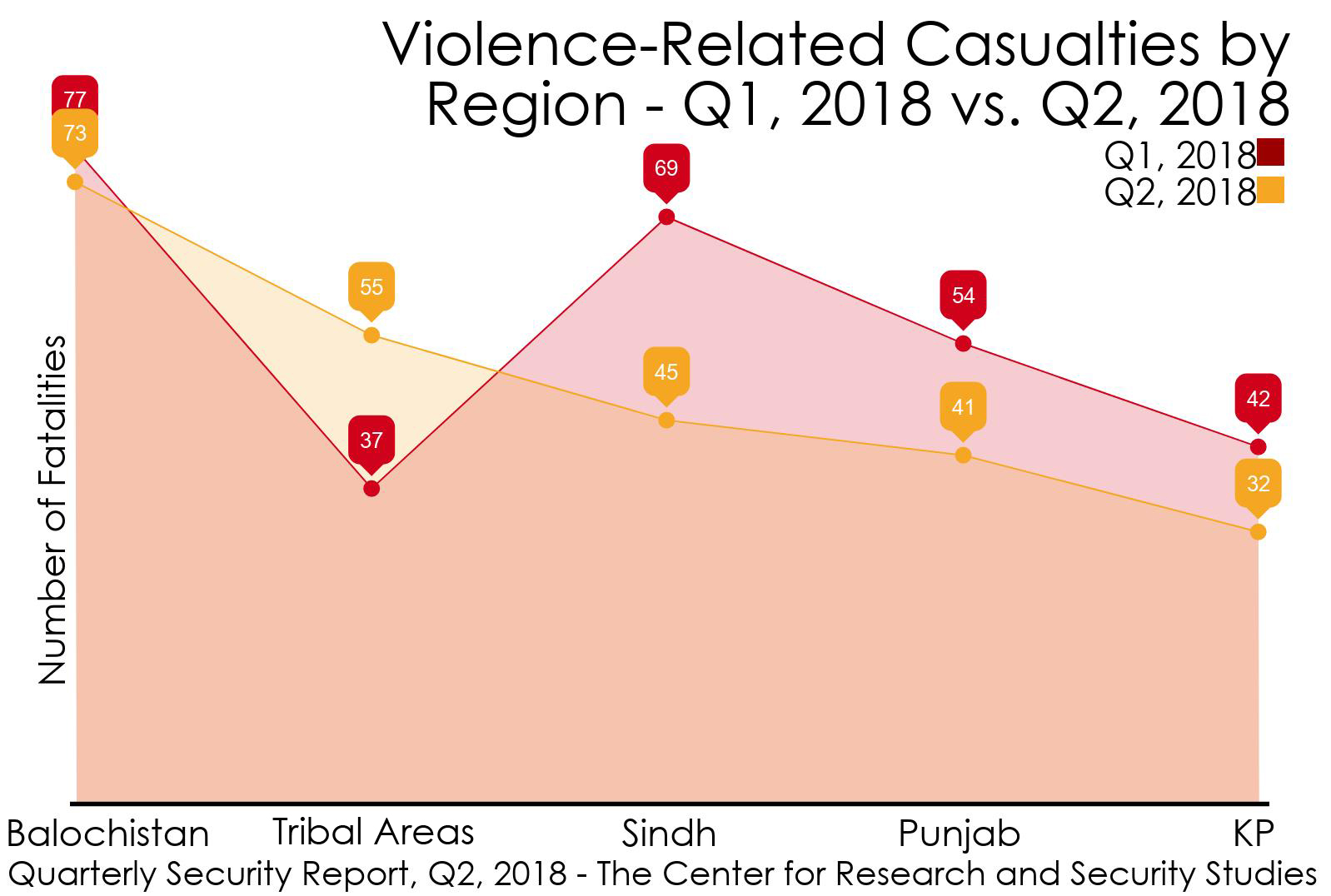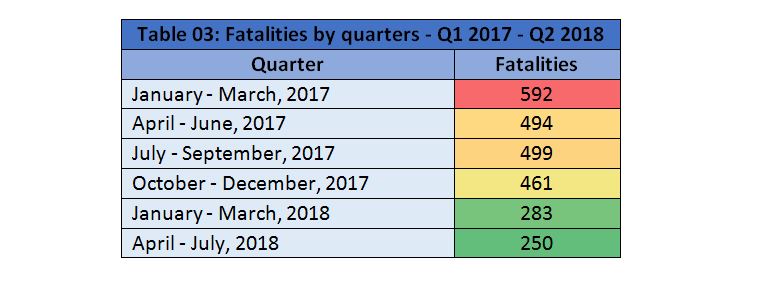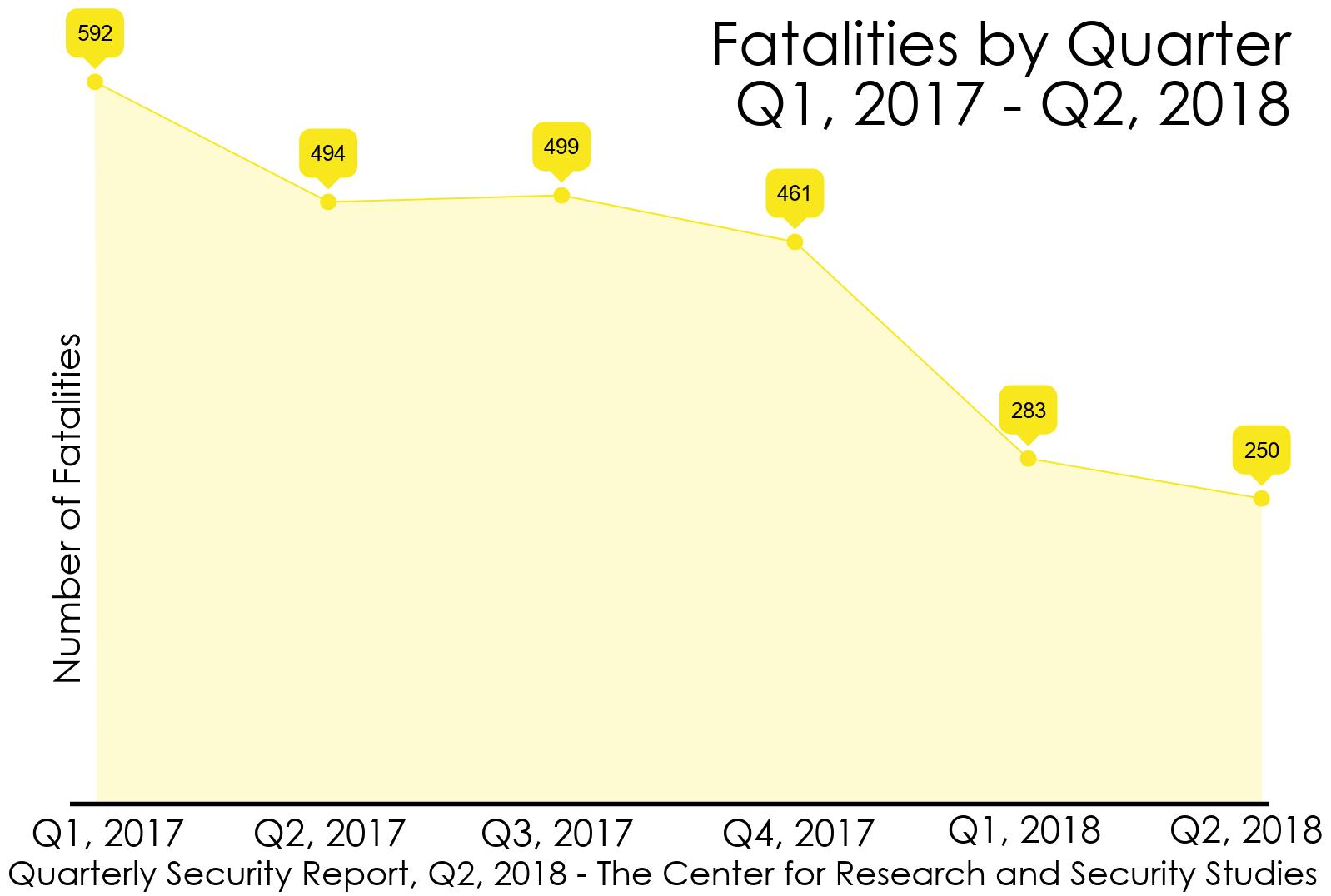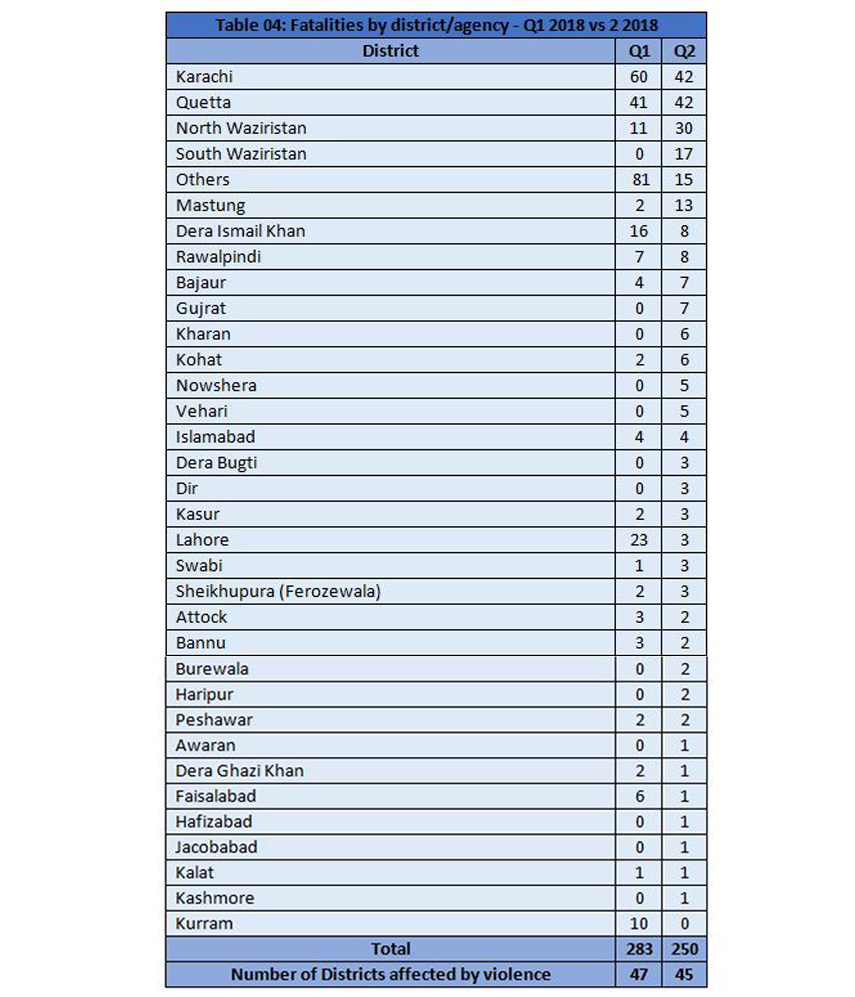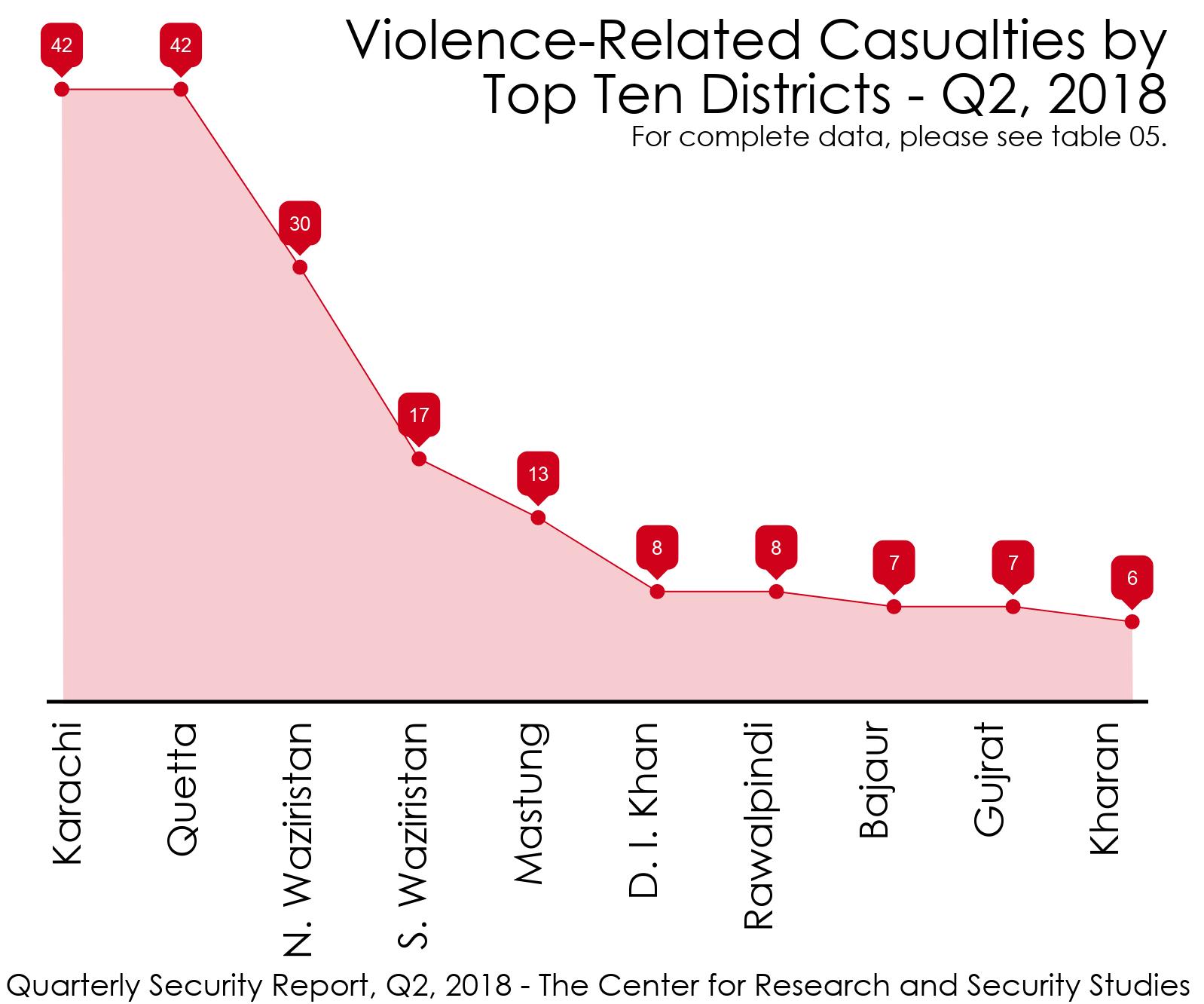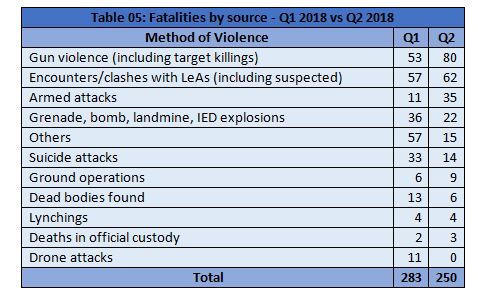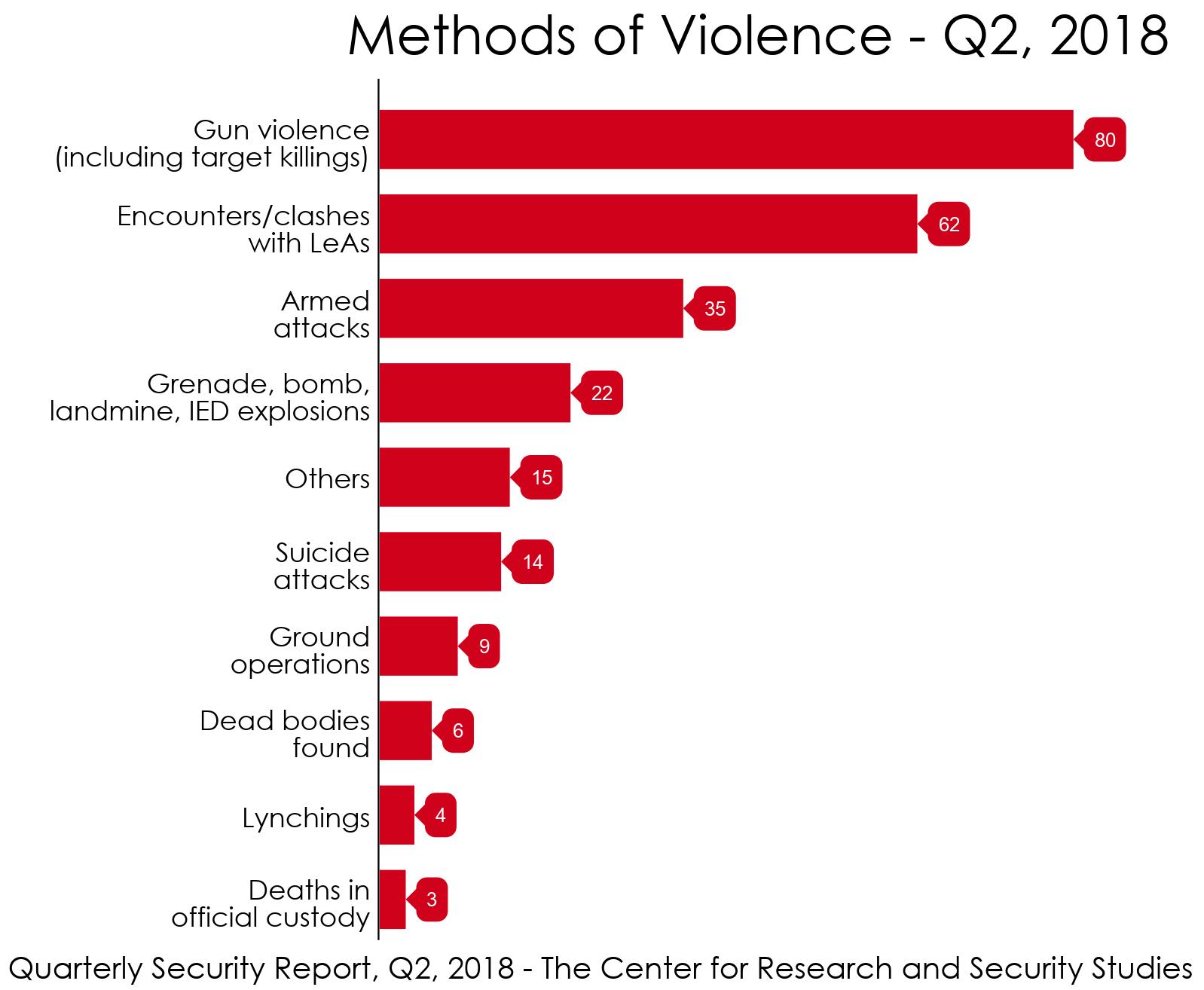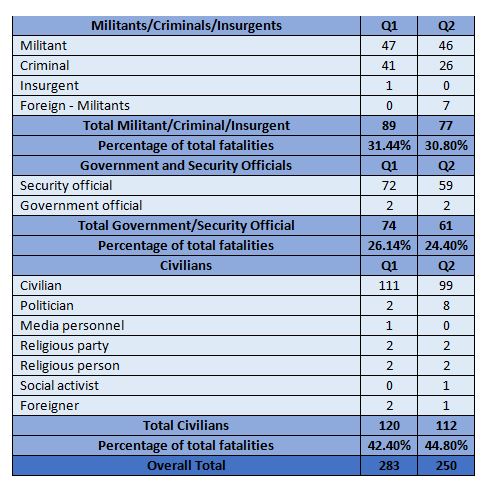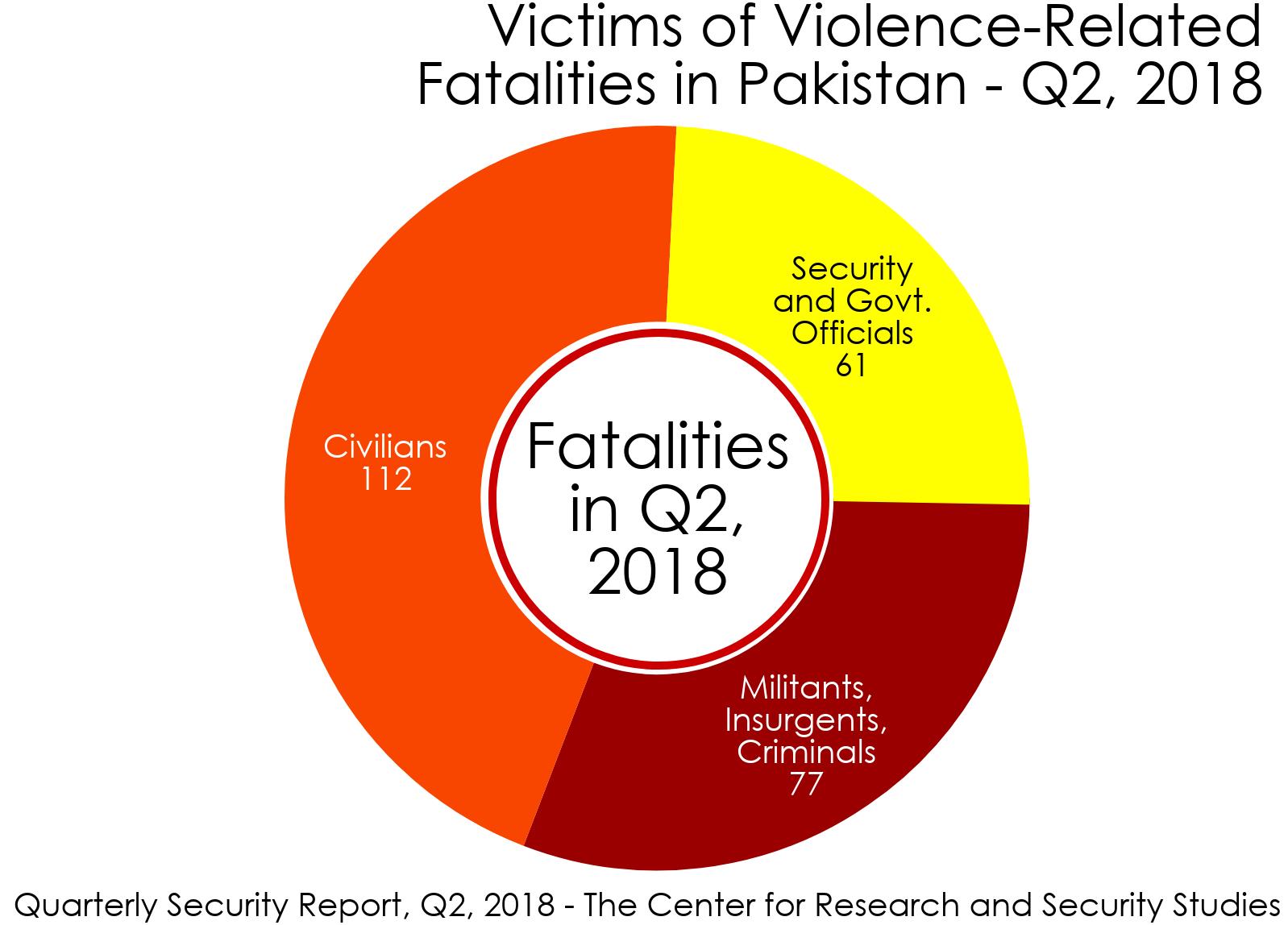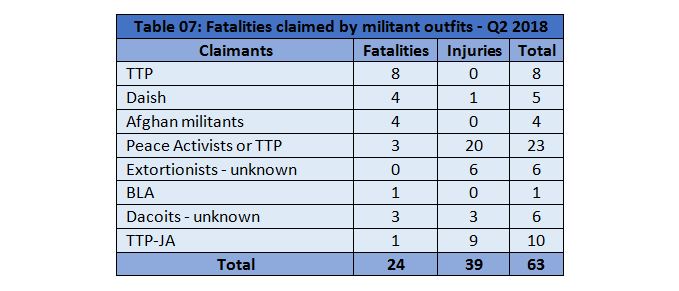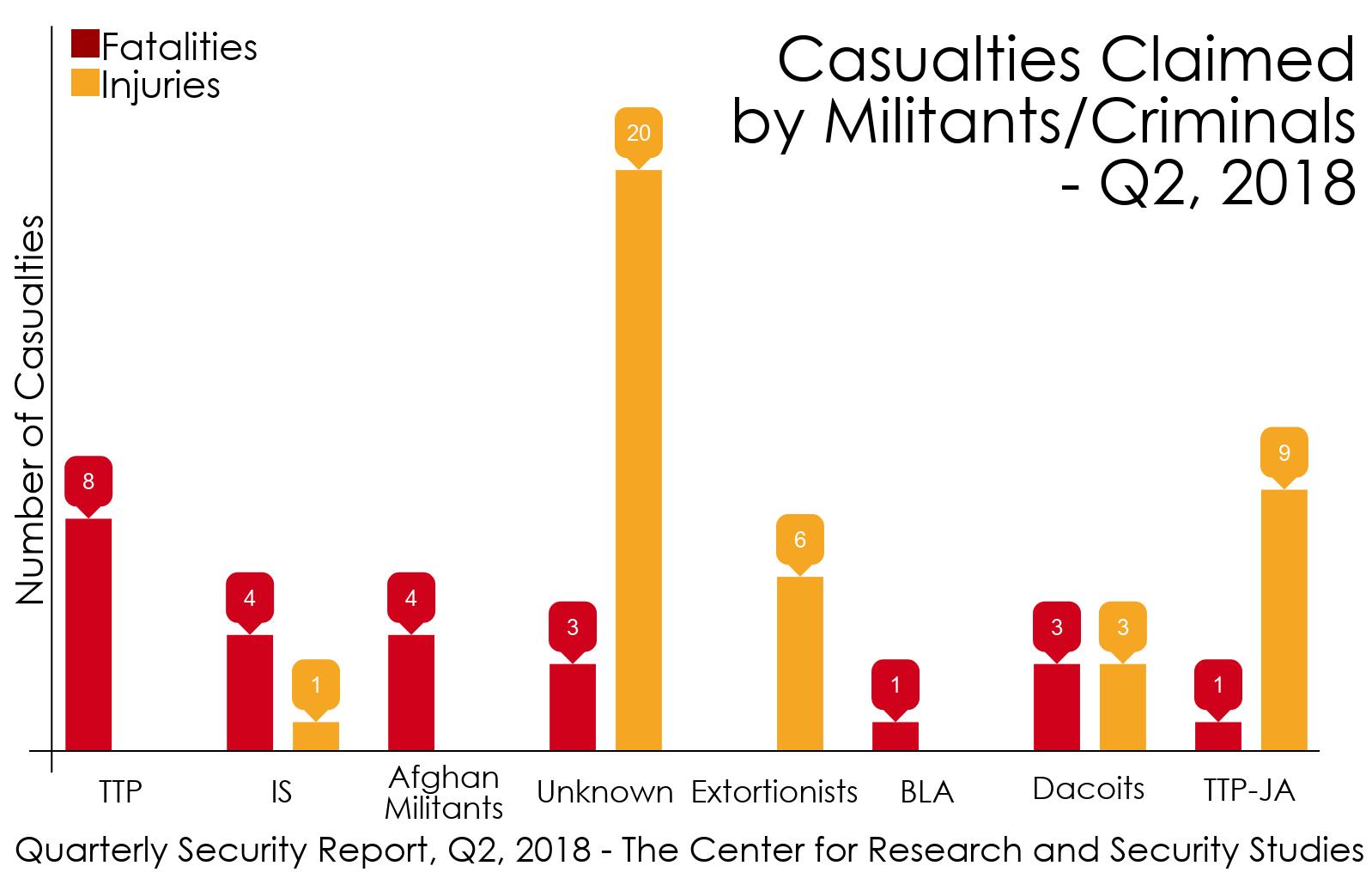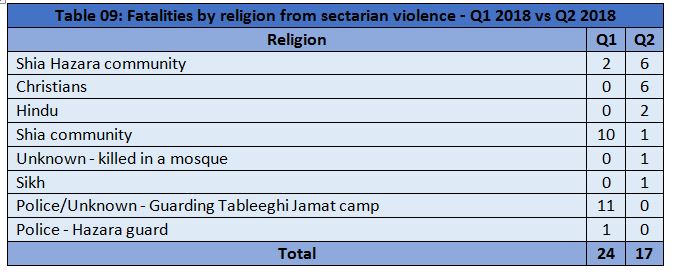Executive Summary:
The death toll from militancy has been on a steady decline. However, militants continue to stage attacks, especially targeting security personnel. Compounding this threat is the worsening relationship between Pakistan and the United States of America (USA) caused by the suspicions maintained by USA on the Haqqani network’s presence in the country – an allegation vehemently denied by Pakistan.
In the second quarter of 2018, violence-related casualties continue to exhibit a downward trend, which has been observed since 2016. In fact, each of the last six quarters has shown a decline in violence-related fatalities, thus showcasing an improving security landscape. Balochistan remains the most violent province, and Karachi and Quetta the most violent cities. Every region in the country exhibited a decline, except Tribal Areas, where fatalities increased by 48%. Gun violence and clashes between LEAs and militants were the primary methods of violence.
Civilians was the largest group affected, with 112 casualties. In addition. 61 security and government personnel were also killed during this quarter. Militants, criminals and insurgents suffered 79 fatalities. TTP claimed the largest number of fatalities this quarter (8), followed by IS (4), and finally TTP-JA (1) and BLA (1). Sectarian violence also saw a marked decline this quarter with 17 deaths related to sectarian violence reported in Q2, 2018.
Readers can approach CRSS for information related to this report. Alternately, you may send your queries to mail@crss.pk, directly to Mohammad Nafees, Senior Research Fellow, CRSS – the author of the report (mohammad.nafees@yahoo.com), or Zeeshan Salahuddin, Senior Research Fellow, the editor.
Casualties from Violence in Pakistan:
There were 521 casualties from violence (250 dead and 271 wounded) in the country during this quarter. Like the previous quarter, Balochistan had the highest number of fatalities followed by Traibal Areas, KP, Sindh, and Punjab (table 01).
All regions of Pakistan reflected marginal to significant drop in violence-related fatalities, except Tribal Areas where the number of fatalities went up by over 48% this quarter. Balochistan, despite suffering from the highest number of fatalities, showed a minor decline in militancy when compared to the last quarter (table 02). This shows that militancy is still a serious challenge to the security agencies operating in Tribal Areas and Balochistan.
At the district level, the situation is not as straightforward. While provincial capitals like Quetta and Peshawar reflected no major change in violence, Lahore and Karachi recorded a significant drop. In Tribal Areas, the North and South Waziristan agencies – declared clean of militancy after Operation Zarb-e-Azb – have re-emerged as volatile places. District Mastung in Balochistan also recorded a sharp rise in violence during this quarter (table 04).
Suicide bombings, landmines, and hand grenade attacks decreased reducing resultant fatalities. However, gun violence, armed attacks and clashes between outlaws and security personnel went up significantly. In Karachi, a robber took his life after getting caught, fearing prevalent lynching in the city (table 05).
The performance of security agencies in curbing militancy remained unchanged during this quarter as the percentage of the fatalities of outlaws (militants, criminals, and insurgents) reduced negligibly. On the other hand, the percentage of security personnel as the victims of violence went down by 2% and a marginal increase was also noticeable in the percentage of the civilian fatalities in this quarter (table 06).
The only militant groups that claimed responsibility for terror attacks in the country during this quarter were TTP, TTP-JA, and Daish (table 07). The chief of Punjab Counter Terrorism Department identified TTP-Fazlullah Group, Al-Qaeda, and Daish (Islamic State) as the most serious threats to the province though few terror attacks were claimed by these outfits in Punjab.
Daish re-emerged during this quarter and claimed the target killing of a Christian family in Quetta. TTP-JA claimed responsibility for a suicide in Nowshera that had targeted a Frontier Constabulary (FC) vehicle leaving 1 dead and 10 injured. TTP claimed responsibility for two armed attacks in Quetta. In June 2018, a protest was organized by Pushtun Tahafuz Movement (PTM) in NWA against the killing of their activists and a Political Agent, Hamidullah Wazir, which turned into a clash between PTM and Aman Committee Members, leaving three persons dead and over a dozen injured.
The militants in Afghanistan also resorted to cross-border attacks on Pakistan Army check posts. The first incident took place on April 27, 2018, when a security official was martyred in an attack in the Safi area of Mohmand Agency. In the second attack, the militants from across Afghan stormed Mohmand Rifles 205-Wing’s security post at Shiekh Baba in NWA. During the exchange of fire, five militants were killed and three Pakistan Army soldiers also embraced martyrdom.
Besides the attacks from militants in Afghanistan, the Afghan forces also carried out attacks on April 16, 2018, that left two Pak Army personnel martyred and five injured. The next day, Afghan officials handed over the bodies of five martyred personnel of the Frontier Corps as well as an injured soldier to the elders of Kurram Agency. Last year, a border conflict between Pakistan and Afghan forces left 21 Pakistanis and 50 Afghans dead.
Sectarian Violence:
A total of 17 people lost their lives to sectarian violence during this quarter and 13 were wounded (table 08). The province of Balochistan suffered the highest number of sectarian casualties. No report of sectarian violence was reported from Punjab, GB, AJK or ISB
The most affected community were Shia and Shia Hazara, followed by Christians, Hindus, and Sikhs (table 09). Only Daish claimed responsibility for one armed attack on the Christian community in Quetta. A member of the Tableeghi Jamaat was killed and three others were injured when unidentified persons attacked them inside a mosque in Bajaur Agency’s Mamond Tehsil in May.
During the Easter celebrations, a squabble with the guards of Peshawar’s Chacha Younus Family Park, left three persons wounded – one Christian and two Sikhs. According to the official report, the guards reacted because they “thought it was odd that Sikhs were celebrating Easter.” A Hindu businessman and his son were also shot dead after putting up resistance during a robbery in the Gadani area of Hub district.

